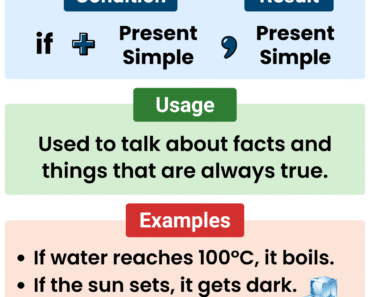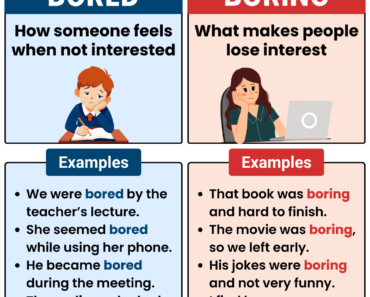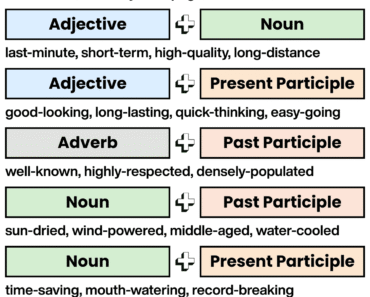
The past perfect tense is used to describe an action that was completed before another action or a specific time in the past. It helps show the correct sequence of events and is especially useful for storytelling, explaining past experiences, and clarifying what happened first. The structure is formed with had + past participle, making it simple to build once you know the verb forms.
In this lesson, you’ll learn how to form and use the past perfect tense in affirmative, negative, and question forms, understand its structure and usage, explore essential grammar rules, and apply common time expressions—all with clear examples.
When to Use the Past Perfect Tense
The past perfect tense shows that one action or situation happened before another action or time in the past. It makes the order of events clear and helps avoid confusion. Here are the main ways to use it:
1. Actions Completed Before Another Past Action
Used to show that something finished before another event happened.
Examples:
- She had left before I arrived.
- They had finished dinner when the guests came.
- He had already gone to bed when I called.
2. Past Experiences Up to a Point in the Past
Used to describe life experiences that were true before a certain moment.
Examples:
- I had never visited London before last year.
- She had tried sushi before moving to Japan.
- We hadn’t heard the news until yesterday.
3. Cause and Effect in the Past
Used to explain why something happened.
Examples:
- He was tired because he had worked all night.
- The ground was wet because it had rained earlier.
- She was upset because she had lost her wallet.
4. Reported Speech
Used to report what someone said about an earlier past event.
Examples:
- She said that she had seen the film before.
- He told me he had finished the project.
- They explained they had met years ago.
Past Perfect Tense Structure
The past perfect tense is formed with had + past participle of the main verb. It has the same form for all subjects, making it straightforward to learn. This tense is used in affirmative sentences, negative sentences, and questions. Below are the forms and examples:
Affirmative Form
Use this form to show that an action was completed before another past event.
Structure: Subject + had + past participle
Examples:
- She had finished her work before dinner.
- I had seen that movie already.
- They had arrived by 8 p.m.
Negative Form
Use this to say that something did not happen before another past event.
Structure: Subject + had not (hadn’t) + past participle
Examples:
- I hadn’t met her before the party.
- He had not eaten breakfast when he left.
- They hadn’t finished the project on time.
Question Form
Use this to ask if something happened before another event.
Structure: Had + subject + past participle?
Examples:
- Had you visited Paris before last year?
- Had she finished her homework before dinner?
- Had they seen the announcement?
Short Answers
Use short answers to reply to yes/no questions. Start with Yes or No, then add the subject and had or hadn’t.
Examples:
- Yes, I had. / No, I hadn’t.
- Yes, she had. / No, she hadn’t.
- Yes, they had. / No, they hadn’t.
Summary Table: Past Perfect Tense
| Form | Structure | Example |
|---|---|---|
| Affirmative | S + had + past participle | She had visited Rome before 2015. |
| Negative | S + hadn’t + past participle | We hadn’t seen him before the meeting. |
| Question | Had + S + past participle? | Had you finished the report by Monday? |
| Short Answer | Yes/No + S + had/hadn’t | Yes, I had. / No, I hadn’t. |
Time Expressions with the Past Perfect Tense
Time expressions help show when an action happened in relation to another event in the past. They make it clear that one action was completed before something else.
Here are the most common time expressions used with the past perfect tense:
| Time Expression | Example Sentence |
|---|---|
| before | She had left before I arrived. |
| after | They went home after they had eaten. |
| by the time | By the time we arrived, the movie had started. |
| already | I had already finished my work when she called. |
| just | He had just left when I got there. |
| never | She had never visited Paris before the trip. |
| until | He hadn’t slept until he finished his essay. |
Regular and Irregular Past Participles
In the past perfect tense, you always use the past participle form of the main verb after had. There are two types of verbs: regular and irregular. Knowing their past participle forms is essential to form sentences correctly.
Regular Verbs
Regular verbs form the past participle by adding -ed (or -d if the verb ends in “e”).
Examples:
| Base Verb | Past Participle | Example Sentence |
|---|---|---|
| work | worked | She had worked there for years. |
| clean | cleaned | He had cleaned the kitchen before dinner. |
| play | played | They had played football before lunch. |
| study | studied | I had studied French before moving. |
| call | called | She had called me earlier. |
| watch | watched | We had watched the film already. |
Irregular Verbs
Irregular verbs do not follow the -ed rule, so you must memorize their past participle forms.
Examples:
| Base Verb | Past Participle | Example Sentence |
|---|---|---|
| go | gone | She had gone home before I arrived. |
| eat | eaten | I had eaten before the meeting started. |
| see | seen | They had seen the news already. |
| write | written | He had written three emails by noon. |
| take | taken | She had taken the keys before leaving. |
| buy | bought | We had bought tickets earlier. |






